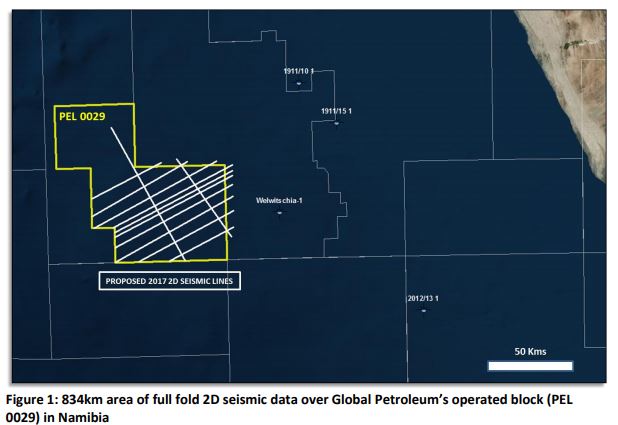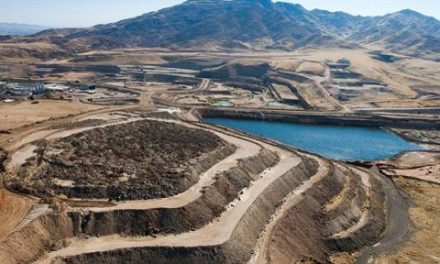
Global jumps out of the water as Gemsbok survey improves chances for major oil discovery

Ten years and six months after the first assessment of existing 2D proprietory data for two offshore oilblocks, 1910B and 2010A, the current operator this week announced it has finalised the processing and interpretation of a new 2D seismic survey completed earlier this year. It is now looking for funding partners to start a more detailed 3D survey.
Global Petroleum Limited, an Australian Securities Exchange listed upstream oil explorer operates in Namibian waters under Petroleum Exploration Licence, PEL 0029 covering the two indicated blocks. Its exploration focus is in the south-eastern section of the blocks known as the Gemsbok prospect. It is located at a total depth of around 3,000 metres in water depths of approximately 1,400 metres.
The new survey comprising 834 km of full-fold 2D seismic data, was carried out by Seabird Exploration of Norway, and shooting took only 10 days, completing on 03 July 2017. The total cost of the acquisition is approximately US$740,000, excluding processing.
Global Petroleum’s interest in Namibian offshore oil exploration started in 2011 shortly after the appointment of London-based Managing Director and Chief Executive, Peter Hill. Nineteen days after he assumed office, the company announced its first new 2D seismic survey. The survey was done by TGS NOPEC.
“The new seismic survey will be shot using a longer cable than the old surveys and will be of higher resolution. As well as better delineating the two structural leads and clarifying the extent of the stratigraphic plays, the new survey will provide data in areas currently lacking seismic coverage” Global Petroleum stated on 19 September 2011.
In the meantime the company acquired Jupiter Petroleum, the link which gave it access to a 85% interest in the exploration licence. Global Petroleum hoped then to start a 3D survey before the end of 2011 but it never materialised.
In 2013 and 2014 oil exploration struggled despite Brazil’s HRT establishing beyond all doubt the presence of major source rock in May 2013 with their Wingat well. Global Petroleum had to extend their exploration licence twice. At that point, Global awarded a mandate to FirstEnergy Capital LLP to bring in a partner to fund the next phase of planned exploration. Their petroleum exploration licence was extended to the end of 2016 but the company did not publish any updates during that year.
On 08 June this year, Global Petroleum surprised the offshore industry when it announced its intention to commission another 2D survey, stating that a new survey was required to fill in the gaps in the existing data.
“The survey has been designed as an infill programme with the aim of providing better delineation of an extremely large, multi-level, dip closed prospect – Gemsbok -which has been mapped in the south eastern portion of the Global acreage” the company stated in its regular updates published for the Australian Securities Exchange.
“Global Petroleum’s technical team is both intrigued and highly encouraged by its recent work which has confirmed the Gemsbok prospect, a structural closure extending over 200 square kms. It is unusual to identify such a large, robust structure at prospective depths which does not rely on stratigraphic trapping” it stated.
On Wednesday, Global Petroleum stated “Management believes that the new information has significantly improved the prospectivity across block PEL 0029 in general and the Gemsbok prospect in particular. Better imaging from the new 2D data reveals that the known source rock intervals are likely to be within the oil generative window and this, combined with data showing repeating oil seeps along the faulted flanks of Gemsbok, has greatly improved the chance of a major oil discovery. Gemsbok remains the Company’s primary exploration target.”











































